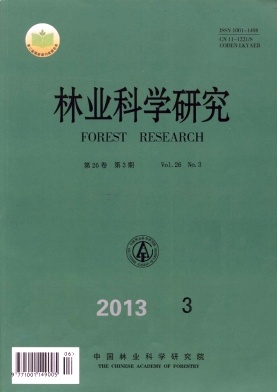Artificial Rearing and Living Habits Observation in the Latent Phase of Pine Shoot Beetle, Tomicus yunnanensis
-
2.
Research Institute of Resource Insects, Chinese Academy of Forestry,
Key Laboratory of Breeding and Utilization of Resource Insects of State Forestry Administration, Kunming 650224, Yunnan, China
-
Received Date:
2012-12-21
-
Abstract
The pine shoot beetle Tomicus yunnanensis (Kirkendall and Faccoli) (Coleoptera: Curculionidae: Scolytinae) is one of the main pests of pine forest in southwest China. Its life cycle involves reproduction in the phloem of trucks or larger brunches of dead or weakened trees, followed by a long maturation feeding by callow adult in shoots of healthy trees which often cause massive tree death. A simple and practical method for rearing T. yunnanensis was set up using host timber segments and artificial pupal cells by continuous rearing works within past four years. Then its experimental population was established in laboratory and the living habits during the latent phase were observed using this new rearing method. The results show that it completes three generations in one year under laboratory condition in Kunming, Yunnan Province. The mean time of each generation is 101 days, and the mean survival rate is 92.4%. A mating female begins to oviposit after 6 days and may last 122 days. The average oviposition number is 429 per female in its life time. The method is easy to operate and may provide effective approaches for getting standard experimental insects for further research.
-

-
References
|
[1]
|
Kirkendall L R, Faccoli M, Ye H. Description of the Yunnan shoot borer, Tomicus yunnanensis Kirkendall & Faccoli sp. n. (Curculionidae, Scolytinae), an unusually aggressive pine shoot beetle from southern China, with a key to the species of Tomicus[J]. Zootaxa, 2008, 1819:25-39 |
|
[2]
|
Ye H. Occurrence, distribution and damages of Tomicus piniperda in Yunnan, southwestern China[J]. 云南大学学报:自然科学版, 1998, 20(5):361-363
|
|
[3]
|
赵 涛,周 楠,李丽莎. 纵坑切梢小蠹在云南松上的繁殖特性[J]. 西北林学院学报,2003,18(3):47-49
|
|
[4]
|
叶 辉. 纵坑切梢小蠹对云南松蛀害研究[J]. 昆虫学报,1999,42(4):394-400
|
|
[5]
|
刘明德,卢 南. 云南纵坑切梢小蠹的扩散危害及防治初报[J]. 森林病虫通讯,1992(3):15-16
|
|
[6]
|
Byers J A. Simulation of the mate-finding behaviour of pine shoot beetles, Tomicus piniperda[J]. Animal Behaviour, 1991, 41:649-660 |
|
[7]
|
吕 军,叶 辉,段焰青,等. 云南切梢小蠹对云南松树的蛀干危害及致死机理[J]. 生态学报,2010,30(8):2100-2104
|
|
[8]
|
叶 辉,党承林. 纵坑切梢小蠹对云南松危害习性研究[J]. 云南大学学报:自然科学版,1986,8(2):218-222
|
|
[9]
|
肖 良. 小蠹虫人工饲养方法简介[J]. 昆虫知识,1993,30(1):49-50
|
|
[10]
|
叶 辉. 一种饲养树皮小蠹的方法[J]. 昆虫知识,1992,29(2):125
|
|
[11]
|
殷蕙芬,黄复生. 中国经济昆虫志,小蠹科[M]. 北京:科学出版社,1984:53-54
|
|
[12]
|
叶 辉. 纵坑切梢小蠹种群生态学研究 [D]. 重庆:西南农业大学,1991:14-15
|
|
[13]
|
李 霞,张 真,曹 鹏,等. 切梢小蠹属昆虫分类鉴定方法[J]. 林业科学,2012,48(2):110-116
|
|
[14]
|
赵锦年,应 杰,曹 斌. 杉肤小蠹的初步研究[J]. 林业科学研究,1988,1(2):186-190
|
|
[15]
|
段焰青,叶 辉,李青青. 小蠹虫对针叶类寄主树木的选择危害机制[J]. 昆虫知识,2006,43(1):16-22
|
-
-
Proportional views

-





 DownLoad:
DownLoad: